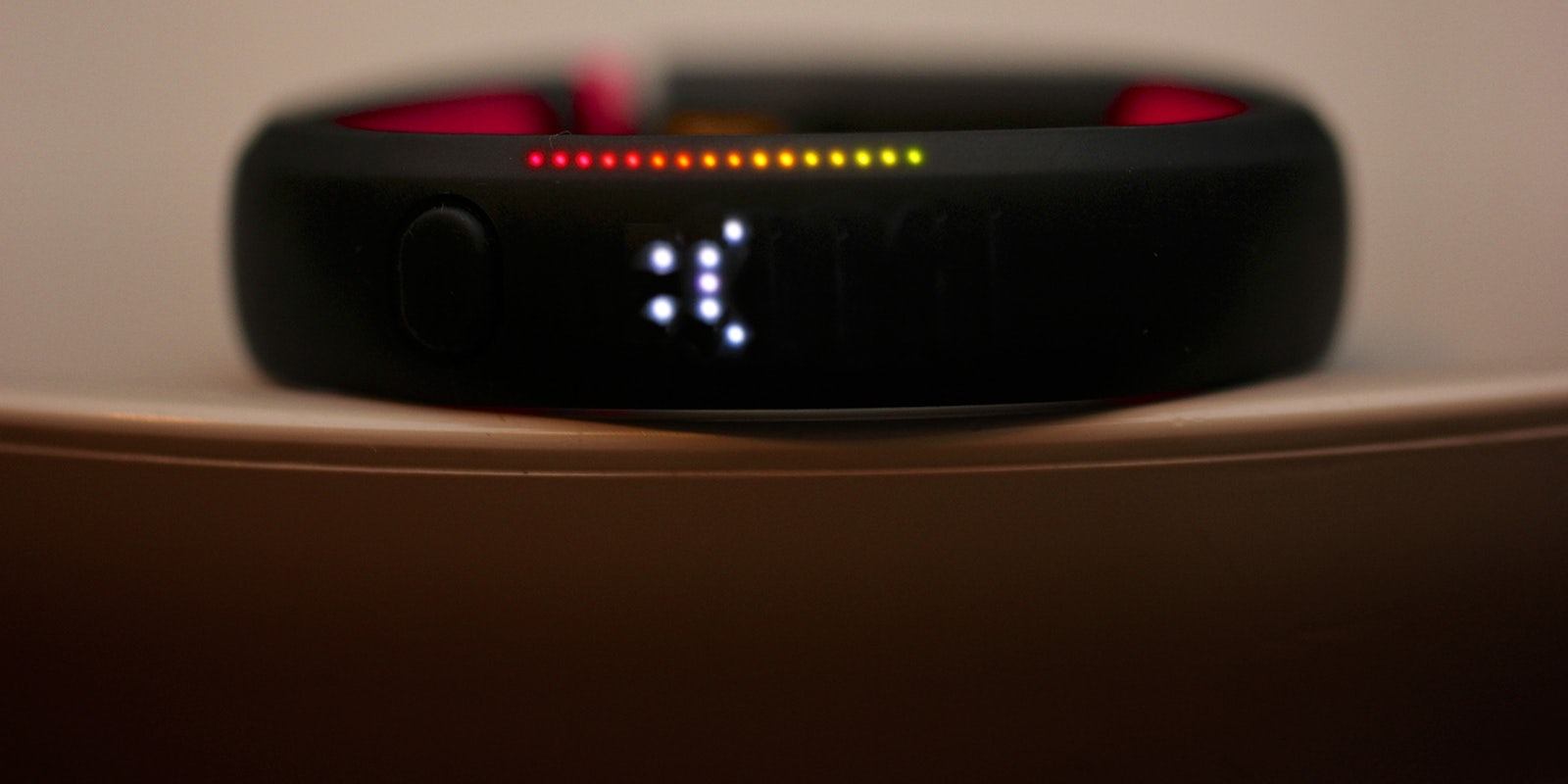How good does an unreleased product have to be to render an entire division of a $65 billion company obsolete?
Nike is in the process of dismantling the hardware division that builds the FuelBand, a device many consider one of the most successful pieces of wearable tech ever produced. As first reported by CNET earlier this month, up to 55 people will be let go from Nike’s Digital Sport division. Nike had plans to release a new, slimmer version of the FuelBand this fall, but those plans have been shuttered as well. What could cause a $65 billion company to get rid of one of its most popular products, without announcing a replacement? There’s only one company with that kind of pull—Apple—and Nike is going all in with them.
The Nike-Apple relationship is not new by any stretch, and it has been fruitful for both parties for nearly a decade. The Nike+ iPod kit, Nike’s first foray into activity tracking, has been available since 2006. NikeFuel, the measuring stick for all activity while using Nike tracking devices does not work on Android, a fact that is not hidden by Nike executives. Nike built the Nike+ Move app exclusively for the iPhone 5S, taking advantage of the new M7 coprocessor in the device that allows for better movement tracking. Notably, Apple CEO Tim Cook has sat on Nike’s board of directors for the past nine years.
But why kill the FuelBand? Even though Apple has never confirmed it, we know the iWatch is coming, thanks in large part to Mark Gurman of 9to5Mac, who has been leading the reporting on the nearly mythical device. We know that Jay Blahnik, Nike’s top fitness consultant has gone to Apple as well. We also know that even as Nike owned 10 percent of the $238 million fitness tracker market, they were willing to shutter a $20 million-plus business to work closer with Apple on the iWatch.
Rarely is a multibillion dollar company willing to stop producing a popular product to work with a partner in the same field, especially if that partner hasn’t released any devices in the field. There’s been no indication that millions of people even want or would spend hundreds of dollars on smartwatches. In any event, Apple has the clout and recent product history to give Nike confidence in such a change. When your last new product was the iPad, little things like a $20 million business can be tossed out without a second thought.
The iWatch should be available this year, according to Recode’s Walt Mossberg. “Apple executives have assured me that the second half of 2014 will have impressive new products,” Mossberg wrote. The only rumored new products expected from Apple are the iWatch and a TV set, the latter of which has been repeatedly delayed due to content deals.
With Nike choosing to go with Apple, the nascent wearable industry as a whole is taking a step backward—just like the PC, smartphone, and tablet industries before it. The Jawbone Up and Fitbits are mainly for the fitness-focused, while Samsung has tried and failed to make a decent smartwatch without Google’s help (the Gear Fit does look nice, but is awful in every other aspect, and Samsung has announced it will be working on wearables with Google later this year). While Pebble has had some success, it has been mainly with early adopters. There will be only two serious options moving forward if you want a good smartwatch—and stop me if this sounds familiar—Apple or Google.
Android Wear, Google’s wearable operating system will be shown off this summer, with devices from LG and Motorola expected within the next few months. Motorola has shown off the Moto 360, which features a new round design, contrary to the (ugly) square casing currently utilized by every smartwatch maker.
For all the things we do know about the iWatch, we don’t definitively know what it will look like, how much it will cost, and when it will be released. “Just like the design of the original iPhone was far more advanced than the designs of preceding smartphones, I think the iWatch’s design will move beyond the plastic and cheap metals that make up the fitness bands and other wearables of the current market,” Gurman said last month when I asked him about the potential look of the iWatch.
Nike gave up its hardware business for what is most likely a small piece of a much bigger pie with Apple. But in that process, it shows other tech companies there really is no point in going out on your own in a new industry. In the end, even for a huge company like Nike (and Samsung), you will either work with Google, or if you’re lucky, Apple will let you in the walled garden.
And then there were two.
Photo by Kazuhiro Keino/Flickr (CC BY 2.0) | Remix by Jason Reed
